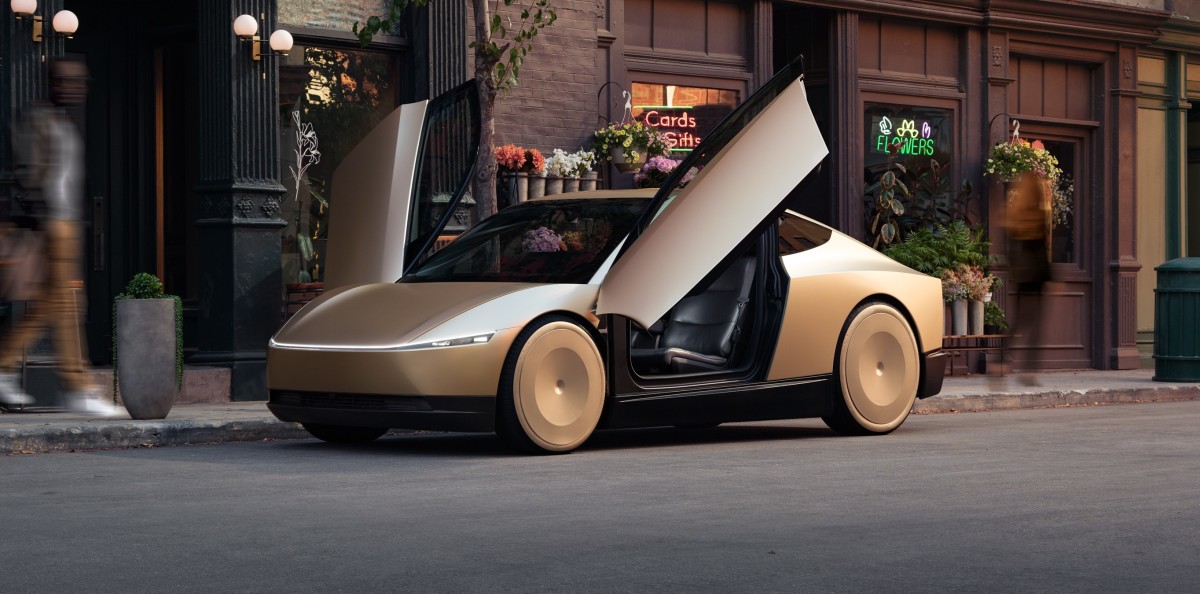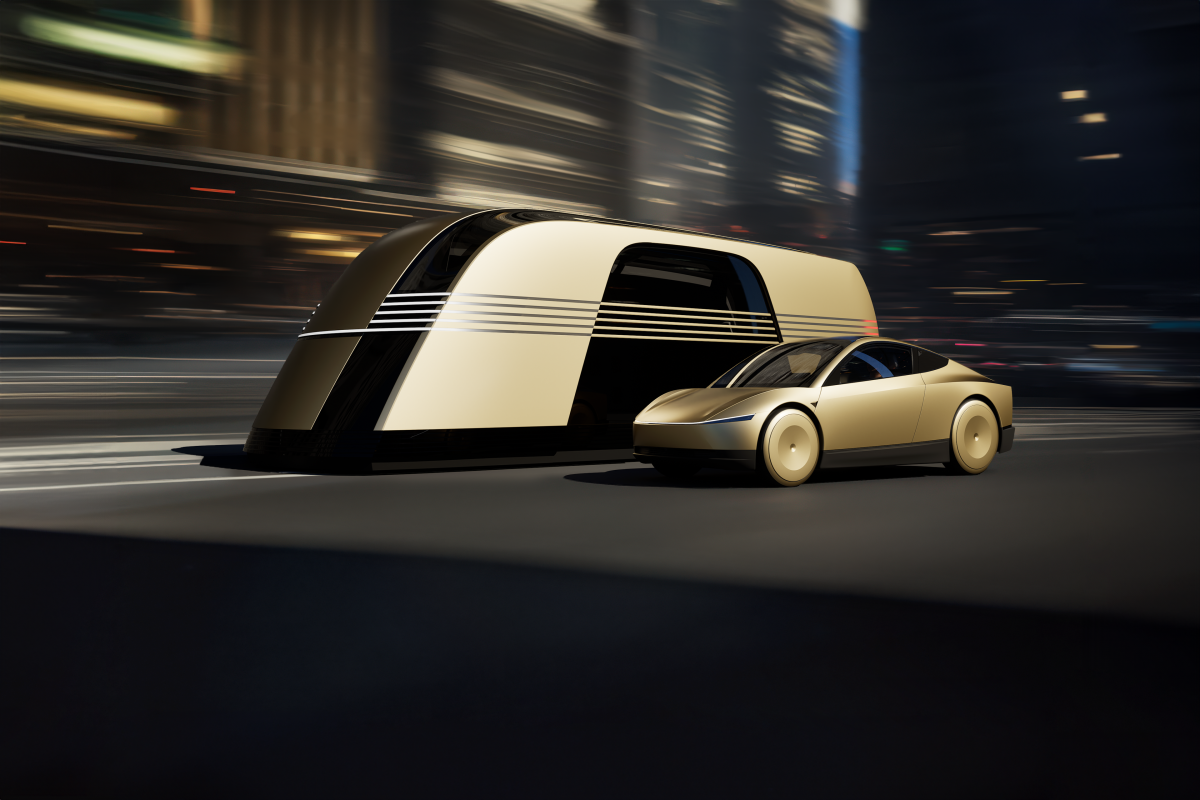
On Oct. 10, at about 7:53 p.m. in Los Angeles or 10:53 p.m. New York time, Tesla's (TSLA) anticipated "We, Robot" robotaxi event started after a long delay.
Most of the marquee products shown off at the Warner Bros. Studios backlot revolved around Tesla CEO Elon Musk's idea for future mobility. He envisions a world without human drivers, where the average person can get their "time back" from driving while autonomous vehicles do the heavy lifting.
Undoubtedly, the event's highlight was the hotly anticipated 'CyberCab,' a stylish autonomous vehicle with butterfly doors and no pedals or steering wheel. Musk says that the vehicle is capable of inductive wireless charging, will cost "under $30,000" and will be available within "2026... before 2027."
Don't miss the move: Subscribe to TheStreet's free daily newsletter
Related: Tesla drops bombshell ahead of anticipated robotaxi event
During his own "one more thing" moment, the Tesla CEO also showed off the 'Robovan,' a mobility solution touted for people "who need more space than a [Tesla] Model Y," as it is a locomotive-shaped vehicle without any physical controls that is touted to seat up to 20 people or to transport goods.
Though the Tesla product launch timeline can be delayed for any number of years, as was demonstrated with products like the Cybertruck or the still-to-be-released Tesla Roadster supercar, one key product that has the chance to permanently put Tesla in the black was missing from this event.

Tesla
The Missing Tesla 'Model 2'
Notably, this event did not include any update or passing mention from Elon Musk about a supposed "more affordable" car dubbed the 'Model 2' which was previously rumored to have been canned.
During Tesla's first-quarter 2024 earnings call on April 23, Musk noted the existence of such a car, saying that "more affordable models will use aspects of the next-generation platform as well as aspects of our current platforms, and we'll be able to produce on the same manufacturing lines as our current vehicle lineup" and that more details would come on August 8; the previous date this event was to take place.
In a post on X (formerly known as Twitter), Deepwater Management managing partner Gene Munster noted the absence of such an announcement and gave a theory as to why Tesla may have held it off.
"My sense is that the car is still on the roadmap for sometime late in 2025, but the company decided not to discuss it, as it would have triggered the Osborne Effect, causing Model 3 buyers to hold off," he said.
The one missing topic from tonight’s event was the “more affordable” vehicle.
— Gene Munster (@munster_gene) October 11, 2024
This was Elon’s “A” topic from the last earnings call, where he mentioned the start of production as early to mid-2025… or maybe even late 2024.
My sense is that the car is still on the roadmap for…
In a note published early Friday morning, Wedbush analyst and noted Tesla bull Dan Ives called the absence of any discussion or introduction of the Model 2 the "elephant in the room" for investors but reiterated that such a reveal may have been inappropriate for the occasion.
"We never expected [a Model 2 reveal] to happen at this event and this is no way an indication that Model 2 is not happening for 2025," Ives said. "We believe this also weighs on shares as the bears try to press this narrative. We believe Model 2 will become a reality with our target date for production in 1H25 and deliveries by the end of 2025 for this sub $30k vehicle."
More Business of EVs:
- A ridiculous Tesla Supercharging flaw is making EV owners hostile
- Study: EV charging stations have a secret built-in business benefit
- Mercedes latest tech is ahead of Tesla in one key area
Tesla has plans for an AI and robotic future, but what about today?
In essence, the event presented on October 10 reflected an ultimatum that Musk gave investors, analysts, and other Tesla observers during a past earnings call.
"We should be thought of as an AI robotics company. If you value Tesla as just an auto company — it’s just the wrong framework. If you ask the wrong question, then the right answer is impossible," Musk said.
"If somebody doesn't believe that Tesla is going to solve autonomy, I think they should not be an investor in the company. And we will. And we are."
View the original article to see embedded media.
While Tesla has robotaxis, locomotive-shaped robotaxi vans, and robots that will pour your drinks and be "your companion" in line for its possible future, the reality is that today, it is an electric car company that still provides mobility to people.
Last quarter, Q3 2024, Tesla delivered 462,890 vehicles and made 469,796 vehicles, which is a bit short of analysts' expectations but still significant compared to the EV delivery numbers of legacy automakers like Ford and General Motors.
But while Elon Musk prioritizes robotics, AI, and robotaxis over its fledgling EV business, the competition is taking Elon's broken promise and running with it.
In May 2024, Stellantis CEO Carlos Tavares revealed that a new, $25,000 Jeep-branded EV will be hitting the states "very soon." Similarly, Ford is working with a California-based team of former Tesla and Apple employees on a new line of cheaper EVs to take on Chinese firms like BYD.
Additionally, General Motors teased the 2026 Chevrolet Bolt during its investor's day presentation. While the visuals were withheld from the webcast, GM President Mark Reuss reassured that the newest version of its small EV is coming in 2025 and will have "the latest technology" and "will be a moneymaker" for GM.
He also alluded that the Bolt will be a part of a "family" of EVs, including one with a price target that is an "even lower cost" than the new Bolt's planned price of "under $30,000."
Tesla Inc. trades on the NASDAQ as TSLA and is down 7.8% from the bell, trading at $220.19 per share at the time of writing.
Related: Veteran fund manager sees world of pain coming for stocks







